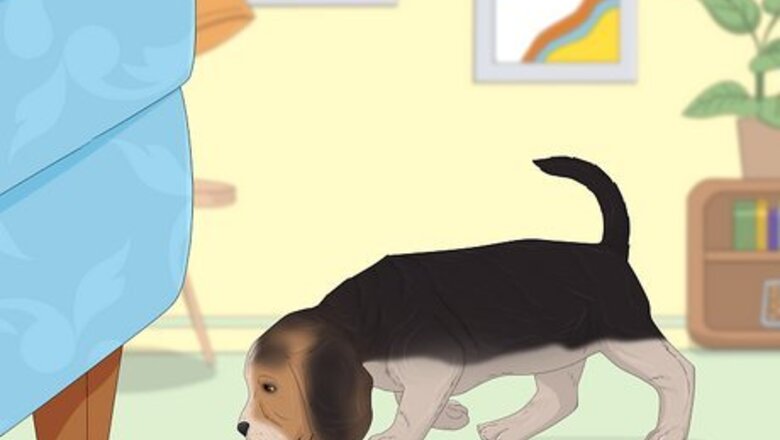
views
Learning the Basics
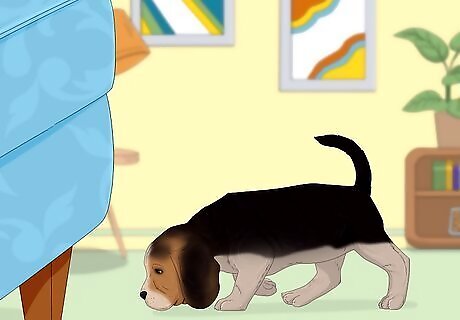
Introduce your new pup to its new home, family and their role. Just like when you are new to a place or group, your new pet may be bursting with curiosity, excitement, fear or joy. Now is the best time to lay out the foundation for a good and pleasant relationship with your pet. For a puppy to settle in and learn to trust and respect you and everyone at home, it is very important to establish your expectations of your puppy and be consistent with them. Only show your pet the areas where they are allowed to be. Initially do not let your new pet roam and explore on their own, especially, if you don't want them to do their business there. For example, if the upstairs area or bedrooms are off limits, close them off and do not allow your puppy to explore there.
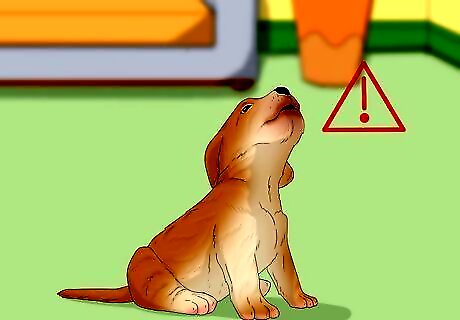
Keep an eye on your puppy. While potty training, it is ideal to keep your puppy where you can watch it at all times. This will allow you to look for early signs that it needs to go and help to prevent accidents. Signs when they might go are when they start circling, scratching, and sniffing. Some of the signs to look for include whining, circling, sniffing, barking, or any sudden behavior change. When you see any of these signs, immediately lead the dog outside.
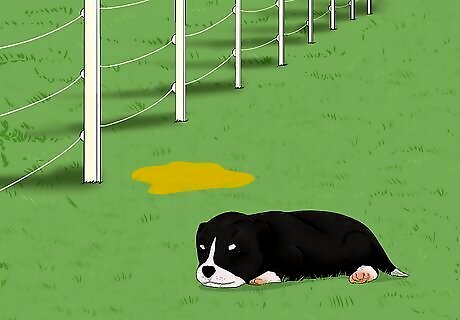
Choose a potty zone. It is best to pick a certain area outside and take your dog there every time it needs to go. You should pick a spot that is not visited by other dogs and is easy to clean up. Your puppy will remember the smell of urine and start to associate the area as its "bathroom." Pick an area that is easy to get to quickly. You will be visiting this area frequently during the training process. Until your puppy has had its third set of vaccines, you should avoid areas where other dogs go or have recently gone, such as parks. It’s a good idea to discuss this with your veterinarian. When taking your dog outside, it's a good idea to keep it on a leash so you can teach it to go in a specific location. You can also more easily keep an eye on the dog, so you'll know when it is done.
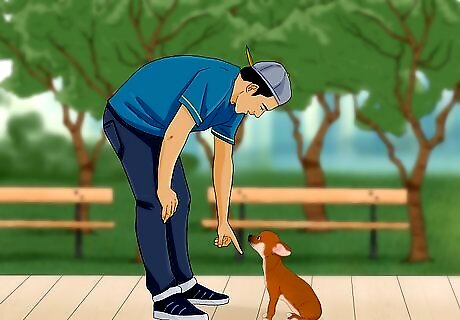
Choose a specific sound or word command. Every time you take your puppy outside to their area, use the word "go," or pick another command. This will teach it to go in that specific location. The dog will begin to recognize the command and understand what you want it to do. This will help the dog to learn when and where it should be urinating or defecating. Use that command only when you want them to go. This will avoid confusion
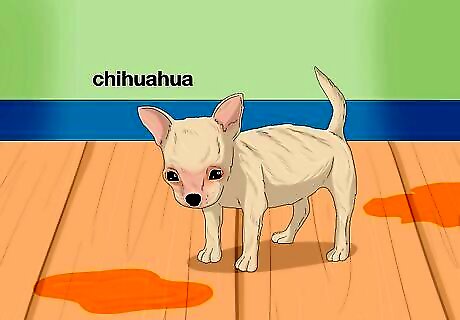
Understand your puppy's particular breed behavior and needs. Research your dogs breed traits and special needs or any behavior that you should be aware of and look out for. For example, If your puppy is a tiny little chihuahua, their bladder will be very small and they will need to urinate more frequently; accidents will happen even if they are well trained. Although most dogs are highly intelligent, they don't think like humans do. It is often a problem when we expect them to understand simple command words or tell you that they need to pee or poop. For this reason, you must be willing to understand how they communicate with you and study the clues they give and get from you.
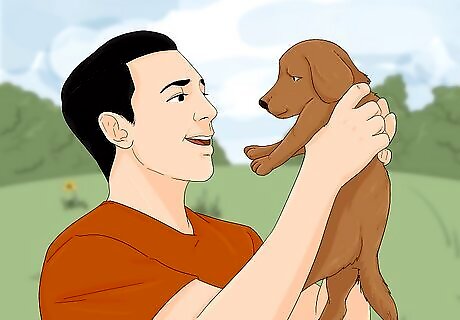
Praise successes. Always praise your puppy every time it uses the appropriate area. Use a cheerful, happy voice that lets the dog know it has pleased you. Being consistent with this will give them an emotional incentive to do their business in the correct place.
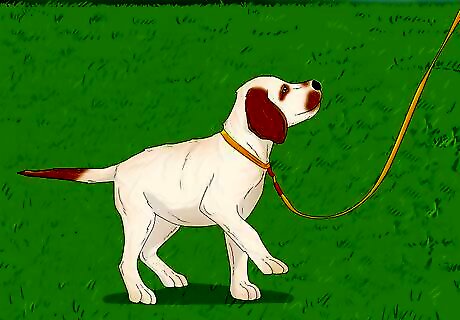
Make potty time a relaxing and rewarding event for your puppy to look forward to. To encourage your dog to patiently hold and wait until you allow them to go they must first enjoy it. Going out for a walk and relieving themselves should be an awarding experience every dog should enjoy. Do not interrupt your dog if they are doing their business where you want them to go. Allow them to relax, loosen up and relieve themselves. You can also give your puppy a small treat afterward to help encourage it. For some dogs, though, this can also be a distraction.
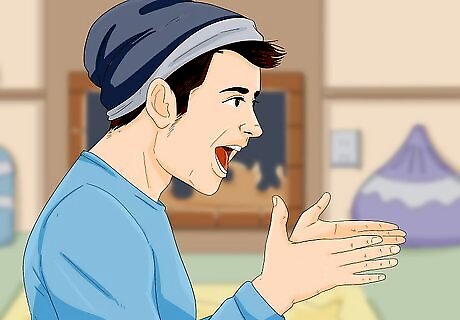
Interrupt accidents. If you catch your puppy in the act of urinating or defecating indoors, make a sudden noise such as a clap, and say the word "no." Then, quickly lead the dog outside. You want to startle but not to scare the dog. The intent here is to get their immediate attention and know that you disapprove marking or pooping indoors. You also want to be consistent, using the same word and/or noise each time. You may not get the same result if the dog is defecating, because most puppies will not be able to stop this. But, you should still do the same thing as part of the teaching process. Never punish your puppy for accidents. The dog does not know it is doing anything wrong. Do not force your puppy to smell or keep reminding them of their actions. They will not remember and could possibly become scared of you. When you use punishment to stop them from going indoors it can confuse your dog and even make it worse. Your dog could only understand that you get mad when you see them potty and will hide from you when they need to go, most likely in places that are hard to reach for you.
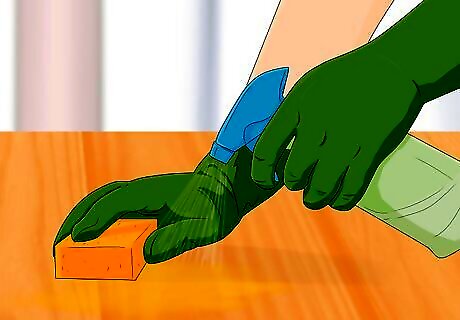
Clean up accidents right away. When your dog has an accident inside, it is important to clean the area thoroughly. This will help prevent the dog from wanting to go again in the same place. Use an enzymatic cleaner, not one that contains ammonia. This will help to get rid of the odor and the dog's attraction to the area. Urine has a strong smell of ammonia that attracts dogs to smell and mark with their own. For the latter, some training pads are sprayed with ammonia to encourage a puppy to go there. You can also use white vinegar to counteract the smell of ammonia.
Keeping Your Dog Close
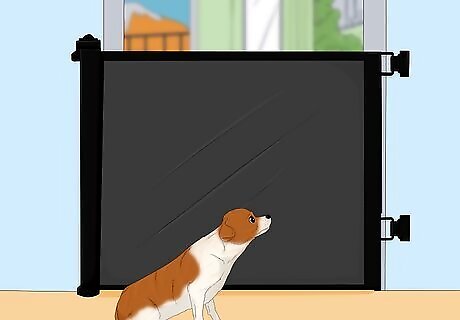
Limit the dog's area. It will be easier to keep a close eye on your puppy if you limit the dog to a certain area of your home. You can do this by closing doors and using baby gates. If your dog is confined to a smaller area, you will be able to observe it constantly to determine if it needs to go outside. The area should be large enough for the puppy to play in, but small enough that you can see it at all times. A small room or sectioned off area of a room is ideal. Be sure to pick an area that has fast, easy access to the outdoors. A room with a door leading straight outside is best. Picking an area that is easy to clean is also a good idea. There will be accidents in the early stages of training.
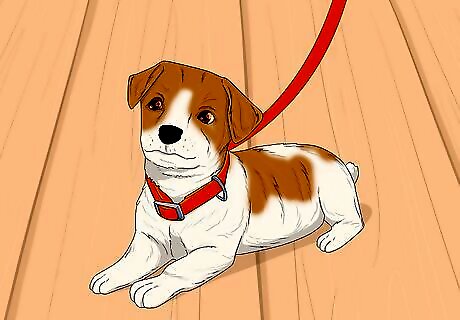
Keep your puppy on a short leash. Keeping the dog on a leash, even while indoors, allows you to move more freely while still keeping a close eye on your puppy. With your dog on a leash, you can move from room to room and keep your puppy with you. This way, there will never be a time you can't see it. Having the dog already on a leash also means that you can more quickly take it outside when necessary.

Use a crate when you can't watch the dog. When you leave home or are unable to watch your puppy, using a crate can be an effective way to help potty train. Your puppy will learn to view the crate as its "home" and will be reluctant to soil their area. The crate should be just large enough for the dog to stand up, lie down and turn around. If the crate is too large, the dog may use one area as a bathroom and another area for sleeping. Limit the amount of time that the dog spends in the crate to less than four hours at any one time.
Establishing a Routine
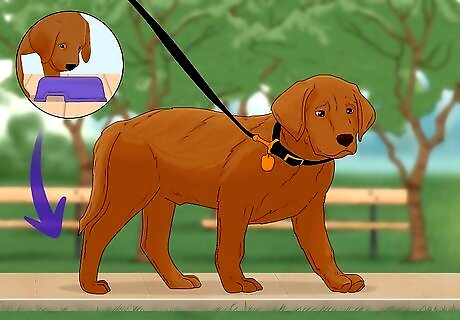
Be consistent. Being consistent is one of the keys to potty training. When taking your puppy outside it is best to always use the same door. You should always take the dog to the same spot and use the same command to help it to associate the area with the appropriate action. Take your puppy outside first thing in the morning and after every meal. Take your dog outside anytime you come home or take them out of the crate. Let your puppy out after playing or drinking water, after napping, and just before bedtime. With very young puppies, and in the early stages of training, you can also try taking the dog out every 20 minutes or so, when possible. This may help to avoid accidents and also give you more chances to praise your dog for going in the right place. Regular walks can also help to encourage the dog to go.
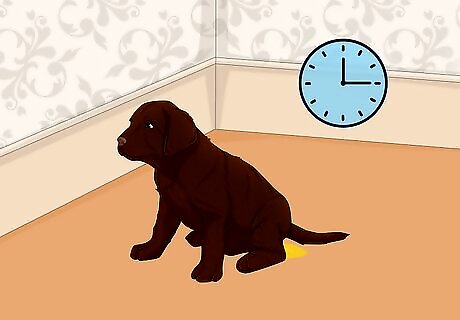
Learn how often your dog needs to go. Pay close attention to how frequently your puppy needs to urinate. This will help you to learn their routine and predict when they need to take a trip outside.
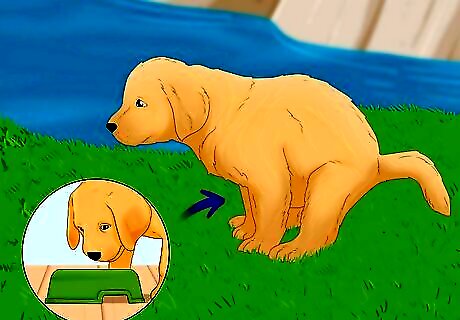
Schedule trips outside around meal times. Keeping a regular feeding schedule will help with a regular potty schedule. Puppies will usually need to go immediately after eating. Taking your pup out after every meal will help to reinforce the idea of where they are supposed to go while minimizing the mess.














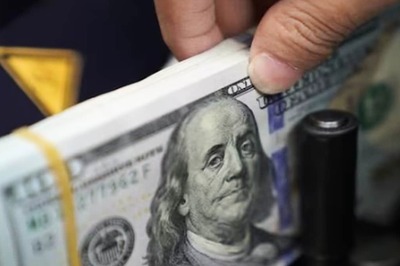


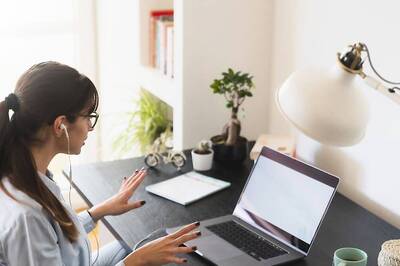

Comments
0 comment